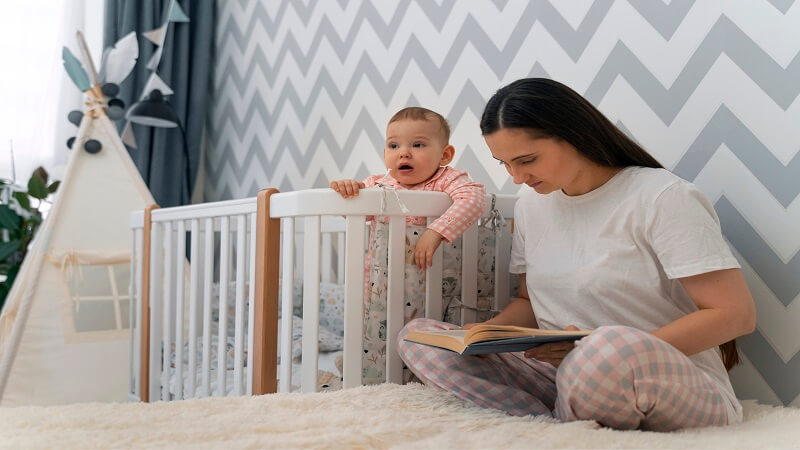A nursery is more than a pretty corner of the house — it’s the first room you’ll share with your child, the place for midnight feeds, first naps and quiet hand-in-hand moments. Designing a space that feels warm *and* works hard for the parent on duty is the secret to a nursery that remains useful beyond the baby months.
Start with intention (not impulse)
It’s tempting to buy the cutest decor you find, but a little planning goes a long way. Start by listing what you need most: sleep, storage, a comfortable feeding nook, and a safe play zone. Decide which items should be timeless — a sturdy dresser, a convertible crib — and which can be seasonal extras, like mobiles or novelty toys.
Choosing neutral or adaptable base pieces lets you change the room’s personality with minimal cost: swap textiles, add a rug, or switch a wall print and the room can feel brand new without replacing big-ticket items.
Versatile furniture pays off
Convertibles are the workhorses of nursery design. A crib that becomes a toddler bed, a changing table that converts into a chest of drawers, or a rocking chair that doubles as a reading seat — these choices stretch your budget and reduce waste. Look for furniture with classic lines and good construction that will survive rough-and-tumble toddler years.
If you’re researching product options, consider browsing curated multi-functional baby gear collections. Smart manufacturers now design items specifically to evolve with the family, which saves you time and future headaches.
A well-planned nursery blends comfort, safety and everyday functionality.
Safety isn’t negotiable
A nursery must be practical and secure. Anchor heavy furniture to walls, choose cordless window coverings where possible, and keep small items out of reach. Sleep safety is paramount — use a firm mattress fitted with tight sheets and avoid loose bedding for infants. As your child gains mobility, revisit the room to remove hazards you didn’t need to consider before.
Design for comfort and workflow
Think in terms of workflow. Where will you change diapers at 2 a.m.? Where do you keep spare clothes? Place a comfortable chair near a side table for water, a phone, or a book. Good lighting matters: blackout curtains for naps and a dimmable lamp for nursing make life easier.
Keep the most-used supplies within arm’s reach of the changing station and out of baby’s reach when not needed. A compact caddy that sits on the dresser or a slim rolling cart can be lifesavers during late nights.
Smart storage strategies
Babies come with more accessories than you might expect. Stackable baskets, open shelving, and labeled bins help you find things quickly. Consider storage that grows with your child: shallow bins for newborn clothes, later repurposed for toys or art supplies. Under-crib drawers and closet organizers maximize square footage in small rooms.
Textiles and sensory comfort
Soft textiles add warmth and quiet a busy room. Choose area rugs with a non-slip pad, breathable blankets for cozy naps (used only under supervision), and washable covers for high-traffic furniture. Natural fibers like cotton and bamboo tend to be gentle on sensitive skin and easier to launder.
Personalize with meaningful accents
Small personal touches make a nursery feel like home. Frame family photos, display a favourite children’s book, or hang artwork you love. These details create a room your child will recognize and treasure as they grow.
Plan for transition
Anticipate how the room will change. Today’s changing station becomes tomorrow’s bookshelf; that plush toy may be a keepsake rather than everyday play. Select a neutral scaffold of furniture and swap accessories and colors when it’s time for the next phase.
For ideas on keeping your nursery functional and future-proof, check resources and practical guides like those found in the Nestacular Babies Journal, where experienced parents and product experts share real-world tips.
Eco and health-conscious choices
If sustainability matters to you, choose non-toxic finishes and organic fabrics where possible. Low-VOC paints and sustainably sourced wood minimise toxins in the space and help create a healthier environment for your child.
Final checklist for a nursery that works
- Invest in at least two adaptable, long-lasting pieces (crib, dresser/changing table).
- Anchor furniture and choose cordless window coverings.
- Plan storage for quick access to essentials during night feeds.
- Choose textiles that are durable and machine-washable.
- Personalize with items that won’t feel dated in a year.
A successful nursery balances comfort, safety, and longevity. With intentional choices, your nursery will be a calming, useful space that supports the whole family through many stages—not just the newborn months.

